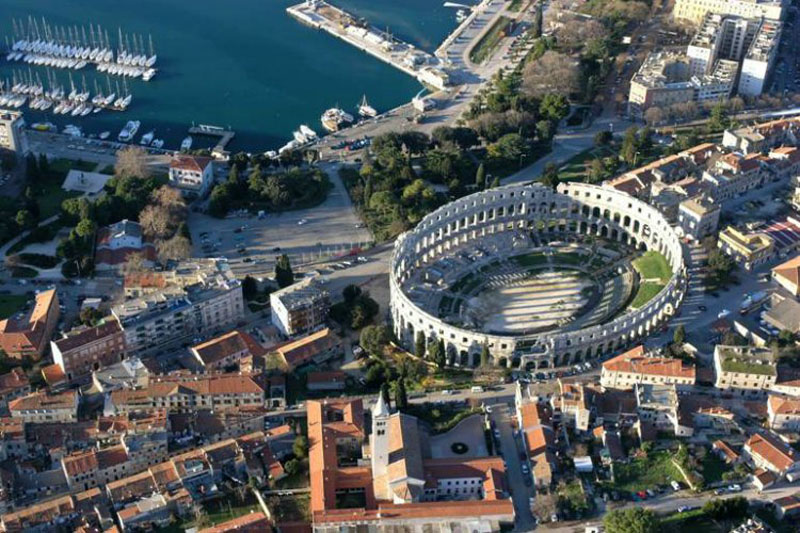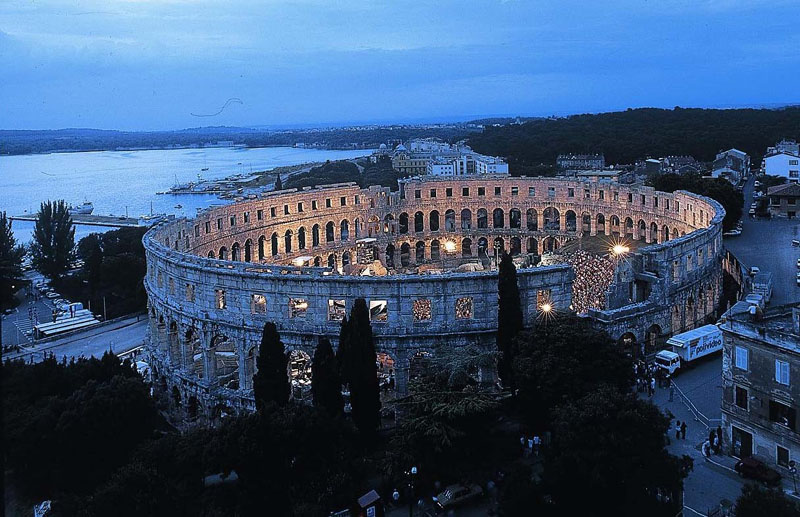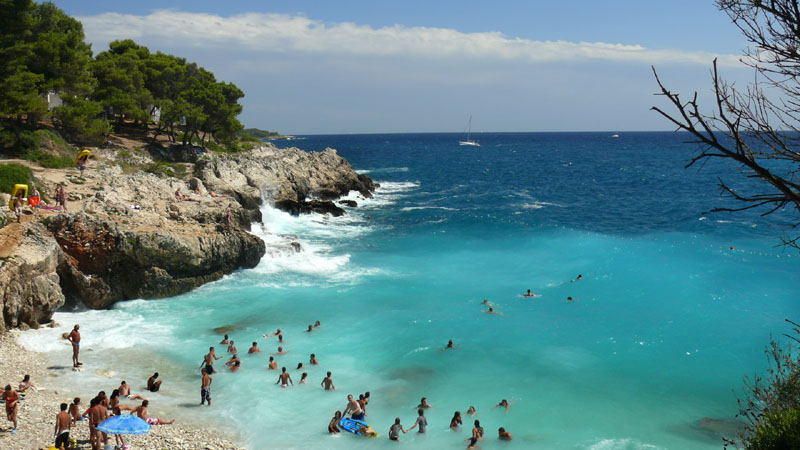Pula
The largest town on the Istrian peninsula offers a diversity of attractions to lovers of culture. The rich itinerary of its three thousand year old history, where every step you take through the old town is a landmark, begins and ends with the Roman amphitheatre. A great tourist asset is surely 190 kilometres of indented coastline, crystal-clear sea and beaches to suit everyone’s needs: smooth and even stone surfaces or pebbles for all generations, especially families with children or “secluded” beaches hidden by untouched greenery for those who want a bit of privacy.


While strolling through Pula you will come across numerous monuments of Roman architecture: the Triumphal Arch of the Sergi from the 1st century B.C., Hercules’ Gate and Twin Gates, the Temple of Augustus, Arena and Small Roman Theatre in the town centre.

A unique experience will be moments of relaxation in the main town square, which has managed to retain its role as the meeting place since the Augustan Age.

Amphitheater
The most famous and important monument, the starting and ending point of every sightseeing tour is the Amphitheater, popularly called the Arena of Pula, which was once the site of gladiator fights. It was built in the 1st century AD during the reign of Emperor Vespasian, at the same time as the magnificent Colosseum in Rome.

The ground plan is elliptical, the longer axis measuring about 130 m and the shorter one about 100 m. Gladiator fights took place in the central flat area called the arena, while the spectators could sit on the stone tiers or stand in the gallery. It is believed that the Amphitheater could seat about 20,000 spectators. Local limestone was used for its construction. In the Middle Ages it was the site of knights tournaments and fairs.


Today it is the venue for summer performances – the Film Festival, Opera Season, Equestrian Festival, concerts, … which can seat about 5,000 spectators. The underground passages, once used by the gladiators, nowadays host a regular exhibition of viticulture and olive growing in Istria in ancient times. The exhibits include reconstructions of machines once used for the production of olive oil and wine (mills, presses, vessels) and amphorae used for storing and transporting olive oil and wine.


The Amphitheater is situated outside the old city walls because of its size and geographical configuration. The road that leads to the center was constructed during Emperor Vespasian, after whom it was named – Via Flavia. Even today it represents one of the main city roads.

Like the rest of the region it is known for its mild climate, tame sea, and unspoiled nature with an average of sunny days of 2,316 hours per year or 6.3 hours a day, with an average air temperature of 13.7 °C (56.7 °F) (6.1 °C (43.0 °F) in February to 26.4 °C (79.5 °F) in July and August) and sea temperature from 7 °C (45 °F) to 26 °C (79 °F).

Arena is very cool place for visit!